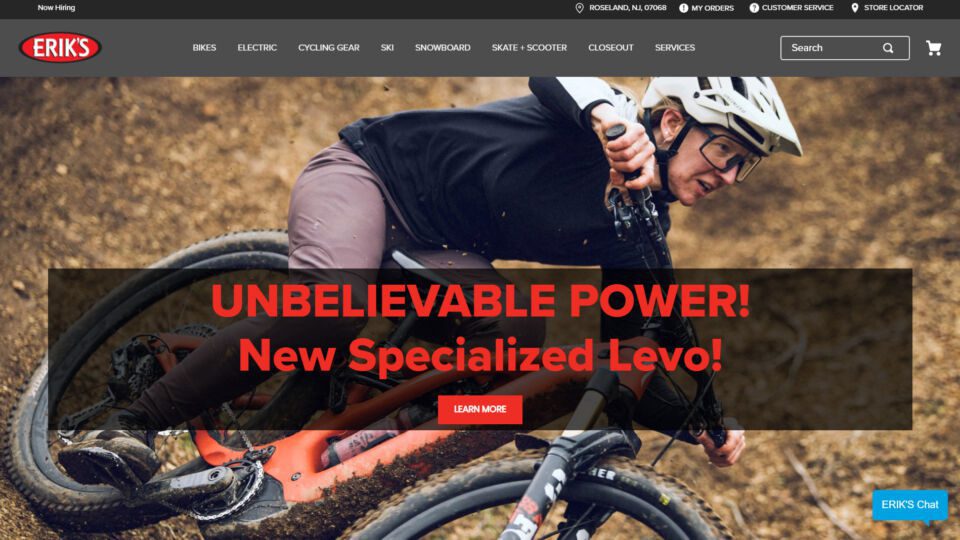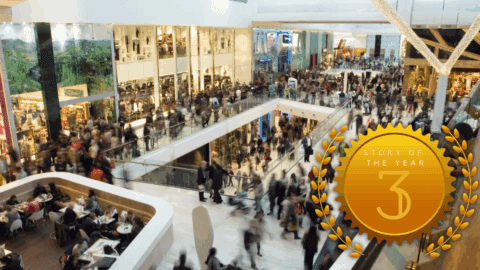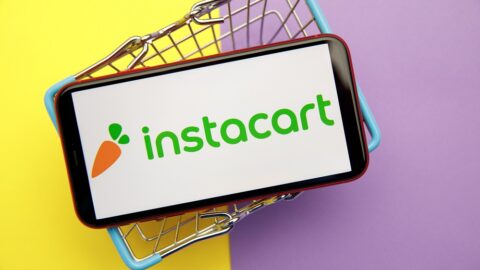Erik’s Bike Shop, which operates 30 brick-and-mortar stores in seven Midwest states, was considered an essential retailer during the height of the COVID pandemic, but it still faced a significant problem: shoppers didn’t want to come in and browse. Even though stores could remain open, and Erik’s took safety seriously with reduced hours at some locations and social distancing procedures, the pandemic still presented significant challenges for a retailer focused on large, expensive and fit-centric purchases like bicycles.
Other factors magnified these challenges. As a safe, socially distant way to get out of the house, biking saw a spike in popularity, which led to a nationwide supply shortage even as Erik’s order volumes rose. The result: tighter-than-normal inventories. This situation in turn led to an increase in customer service activity for Erik’s, as shoppers tried to make sure their local shop had the right bike in stock to avoid making unnecessary trips.
“People didn’t feel like casually going to the store,” said Graeme Bloor, Web Manager at Erik’s Bike Shop in an interview with Retail TouchPoints. “They wanted to pick up an order already placed online. On top of that there was a national shortage of bikes, so inventory became much more limited than in a normal year. We were initiating a lot of options online, but it was a very hard time to hire and train new staff and we needed the customer service team to stay on top of communications.”
Erik’s still managed to deliver convenience to its shoppers through its recently-formed partnership with VTEX. The solution provider’s geo-solution feature allowed shoppers to see if the products they wanted were available at their closest location, in real time. This led to a 20% drop in emails per order, a 68% decrease in chat interactions and an overall communications decrease of 44% per order — improving the customer experience and greatly reducing the burden on Erik’s customer service team.
Information on the Search Page is Key for Seamless Commerce
One of the key elements to Erik’s success was not just having inventory information available but also speeding up the online browsing process by putting as much info as possible directly on the search results page. Prior to the pandemic, shopping at Erik’s was a very hands-on experience: shoppers, often with little experience, could try out a large selection of bikes and leave with the right one for their purposes. With COVID-19 putting a temporary hold on in-store browsing, Erik’s had to push the education process online.
However, digging into a dozen or more product pages to find out not only the details but whether a shopper’s preferred choice is even available nearby can be a frustrating process, so Erik’s and VTEX made that information available on the results page. This greatly reduced friction by making the selection process as quick and painless as possible.
“That actually was not something that we initially asked for, but I think it was incredibly helpful for customers,” said Bloor. “If you’re looking at a page of 20 bikes and you have to click into each to buy the one that you want in your size and color, that’s a lot of clicking around and a lot of extra work. Whereas if you can just scan the search results page and say, ‘Oh yeah, this one looks good and it’s within a 20 minute drive for me,’ then it’s a much easier process.”
Geolocation Has Value Beyond BOPIS
Like many retailers that enhanced their online capabilities during the pandemic, Erik’s will maintain its new capabilities and build on them going forward. Even if buy online, pick up in-store (BOPIS) doesn’t remain the primary channel for most shoppers’ purchases, its undeniable convenience makes it a valuable tool to retain for the future.
One way VTEX’s geo-solution will go on helping is assisting the acceptance of repairs. Erik’s uses the technology to stay informed about customers who are approaching the store to drop off their bike for a tune-up, which simultaneously enables a quicker, more convenient experience for the shopper and helps the store staff ensure they are ready to take any incoming bicycles.
“We have a curbside drop-off for repairs as well — bike repairs are a huge part of our business, and as more people took their bikes out of the garage the repair service saw a huge boost during the pandemic,” said Bloor. “It’s great for customers, but also great for us to know we have an incoming repair getting dropped off ahead of time. We’re continuing to keep any systems that we launched in place and looking at ways to make the customer journey more efficient going forward.”













